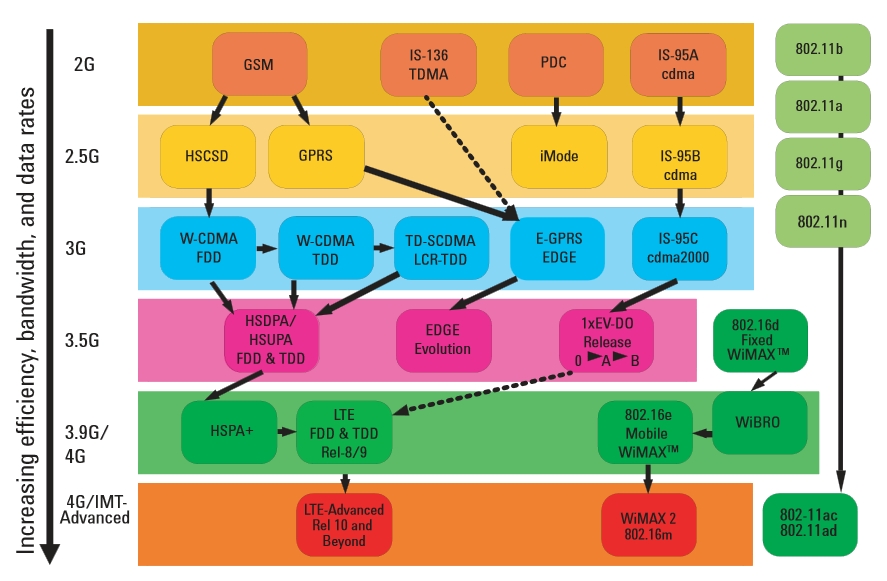Five Standards That Could Change the Future
By: Jesse Cryderman

Unknown to most laypersons and the fodder for jokes among telecom insiders, standards are more than just acronyms and geek speak. They enable interoperability, improve security, increase the speed of networking, spawn innovation, and accelerate the development of new markets. Plus, they can be monetized. In many ways standards are the foundation on which the whole business of telecommunications rests, and for that reason they’re undeniably consequential.
Not all standards are created equal, however. Just look at Betamax, HD DVD and WiMAX. Promising standards often fail to catch on commercially and end up having little impact on the future. The following standards don’t constitute an exhaustive list, but these 5 standards have risen to the top of the telecom alphabet-soup bowl as acronyms and even brand names of imminent importance.
LTE-Advanced
Despite all of the marketing centering on 4G, LTE-Advanced (LTE-A) will be the first standard that consistently delivers the kind of speed that meets the International Telecommunication Union’s (ITU) definition of 4G. While LTE is indeed faster than the 3G and 3.5G technology it replaced, a sustained downlink speed of 100 megabits per second (Mbps), a mobile data rate that’s faster than that of most terrestrial broadband networks, is the requirement for the 4G badge. (By comparison, the peak downlink data rate for my fiber-backboned AT&T U-verse service in Chicago is about 20 Mbps.) As you can see in figure 1, LTE-Advanced also represents the consolidation of the numerous cellular standards that preceded it.

Source: Agilent Technologies
LTE-Advanced has many advantages over LTE:
- delivers speeds 10 times faster than LTE and 100 times faster than 3G;
- offers wider bandwidths through carrier aggregation;
- takes advantage of advanced network topologies, the sort that major mobile operators are rolling out, or the so-called HetNets, heterogeneous networks comprised of numerous node types;
- has higher efficiency, enabled by enhanced-uplink multiple access and enhanced multiple-antenna transmission (advanced MIMO techniques);
- supports self-organizing network (SON) enhancements that are beginning to be deployed.
Three carriers have launched LTE-A networks. Alongside its NEM partner, Huawei, Yota announced its network for Russian subscribers, with data transfer rates of 300 Mbps, last October, but it’s really more of a test bed than a commercialized offering. Meanwhile, SK Telecom launched its LTE-A network in June and, unlike Yota, had LTE-A devices on hand for bandwidth-hungry customers from the start. South Korea’s leading carrier had already signed up more than 150,000 subscribers by mid-July, days before competitor LG U+ announced its own LTE-A network.


















